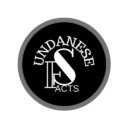The Philosophy Behind Kujang: A Weapon with Threefold Meaning and Noble Legacy
The Kujang is more than just a traditional blade from West Java—it is a symbol of Sundanese identity, philosophy, and character. Behind its sharp edge and elegant curve lies a deep well of cultural wisdom passed down through generations. The Kujang isn’t just a weapon—it’s a statement, a legacy, and a moral compass.
Kujang: More Than a Blade
Originating in the Sundanese region, the Kujang served not only as a farming tool or self-defense weapon but also played roles in religious ceremonies and rituals. It is regarded as a sacred object, believed to hold magical energy, inner strength, sharpness of mind, and bravery—especially in defending justice and truth.
The Kujang is also seen as a symbol of principle, national pride, and ancestral continuity. For those who inherit or keep this heirloom, it’s not just about protection or display—it’s a reminder to live ethically, culturally, and compassionately.
In today’s world, the “weapon” of humanity is no longer physical strength—but compassion and integrity. This belief underpins the enduring value of Kujang in Sundanese life, not as a tool of violence, but as a spiritual artifact carrying forward the spirit of the karuhun (ancestors).
Kujang as a Reflection of Tritangtu Philosophy
One of the most compelling lenses to understand the Kujang is through the ancient Sundanese philosophy of Tritangtu—a worldview built on three essential and equal elements that sustain harmony:
Rama – the voice and representation of the people
Resi – the spiritual guide or religious advisor
Ratu – the leader or ruler in governance
These three elements are balanced in all aspects of Sundanese life, and intriguingly, they are also represented in the Kujang’s design.
Three Parts, Three Principles
Cultural scholar Prof. Jakob Sumardjo explains that the Kujang embodies Tritangtu through its structure:
1. The Tip – Tekad (Intention)
The pointed tip of the Kujang, used for stabbing, symbolizes purpose and resolve. It reflects the tekad or determination one must have in life. It aligns with Rama, who steers society with intention and people’s aspirations.
2. The Middle Blade – Ucap (Speech)
The cutting edge in the middle is used to slice—symbolizing speech or words, which must be clear and sharp. This represents the wisdom of Resi, who advises based on truth, morality, and religion.
3. The Base – Lampah (Action)
The thicker base of the blade can be used for striking, symbolizing action—how we live out our beliefs. This echoes the authority of the Ratu, who acts in the name of justice and leadership.
A Living Legacy of Ethics and Courage
The Kujang is not just a weapon—it is a philosophy in metal. It reminds us to act with intention, speak with truth, and live with principle. These values are deeply embedded in the Sundanese ethos and continue to be relevant in today’s world.
It’s no wonder that the Kujang has become the official emblem of the West Java provincial government. It represents not only the physical strength of a region but also its cultural depth and moral legacy.
Perhaps this very symbolism inspired Governor Ridwan Kamil to commission the building of the Kujang Sapasang Tower in Panenjoan, Jemah Village, Jatigede District—a monumental tribute to Sundanese heritage, to be inaugurated on Sunday, August 13, 2023.
In the Blade, a Message for the Future
To hold a Kujang is to carry the wisdom of ancestors. It challenges the new generation to uphold the values of ethics, culture, and compassion, just as those who came before once did. The beauty of the blade is not only in its form—but in its message.
“Live with purpose, speak with truth, and act with compassion. This is the true edge of the Kujang.”
Read More:
Getting to Know Tritangtu: The Governance Pattern of Ancient Sunda







